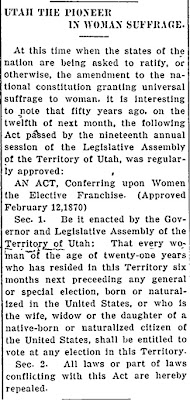Harry [Henry] James Overson, fifth child of Margaret G. Jarvis and Henry Christian Overson, was born at St. Johns, Apache County, Arizona, May 17th, 1906. He was a sickly baby from birth, very sallow, and did not seem to thrive. Apparently there was some liver disorder, as he never cleared from the yellow cast, and he has had a number of serious sicknesses at various times all through life, until the last few years, when he has had better health than ever before.

In school he was quick to learn, always quiet, but quite determined to do very much as he wished. He finished High School, and had a short time of higher work, but was always needing money, and when it ran short, he simply had to get a job. He left home to hunt work when he was a little past eighteen, and went to Phoenix. He soon obtained work in the Arizona Highway Department and has continued there for twenty-six years, commencing with the lowest-paid job until now his work is the most technical in the Department, except only the State Engineer. He is considered the most dependable man in the office. Once his father asked Harry's boss what he found for the boy to do? The man replied, "If we have a particular job to do anywhere in the department, in the office or out on the roads, we just send Harry, and we know it will be done right." This pleased his father greatly, and he often mentioned it to his friends. Through the years, Harry has had experience in all the different departments, tended to business strictly, done his best and made a thorough study of all the details, minded his own affairs, and has not meddled in politics, and so he has kept the good will of his fellows.
As a spare time hobby Harry loved to build. He has a very nice home and two smaller units that he has designed and built largely himself, working after hours, holidays, and vacations. His friends and neighbors like to consult Harry on all topics pertaining to materials and construction problems.

He married Lois Murdock (Alexander, step-father's name), March 18th, 1940, at Lordsburg, New Mexico. She is the daughter of Charles Murdock and Grace Scott and was born February 28th, 1917, at Duncan, Greenlee County, Arizona. She was raised by her grandmother, Lillian Moore, who was a widow with a number of boys, her husband dead, and Lois was alternately loved, petted and teased by her uncles, mother and grandma, and being the only girl, pretty and cute and not too strong, she had to learn to get along with people, and stick up for herself. As she grew into womanhood, she went to live with her mother and step-father, Harry Alexander, who was keeping a restaurant, and therefore was soon a waitress, and drilled under a very efficient and particular cook and manager. She was also expected to iron the uniforms for her step-father and herself, and see that they were spotless and trim. She thus became a good cook, laundress and waitress, and was able to earn a good living. But she was taken sick and had to be sent to a hospital, not, however, until it was almost too late. The doctors found a ruptured appendix—and it was only after months of great suffering, much of which time her life was despaired of, that she slowly came back to at least, partial health. She was never very strong after that until long after her marriage, and that seige [sic] is probably the reason she has never been able to be a mother, much as she has desired to. She idolizes Harry, and keeps their home spotless, has good meals, loves to entertain on occasions, and has taken great pride in his building projects, and the last few years has had a good job in an office, thereby helping with finances to pay for and furnish their lovely home, and have small homes to rent to help them later with an income when time to retire comes.

Harry J. Overson and wife, Lois Murdock and mother, Margaret Jarvis Overson
In front of first home in Phoenix.
Lois also loves pets, and trains them well. Her dogs are very obedient, and do cute tricks, and her birds can sing or talk, and are very entertaining. It is amazing how her pretty little parakeet can talk and entertain people, and how friendly it is.
No children.
[Harry James Overson died February 20, 1992, in Phoenix, Arizona. In New Family Search, he is listed as being married to Gara Patterson (1916-2002) and Lois is not mentioned.]
From Margaret Godfrey Jarvis Overson. George Jarvis And Joseph George De Friez Genealogy. Mesa, Ariz: M.J. Overson, 1957, ii: 190-192.










































